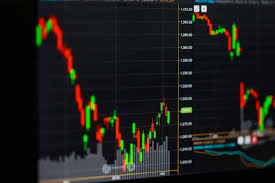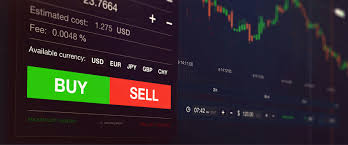
What is Swap in Forex Trading?
In the world of Forex trading, the term “swap” refers to the interest differential between the currencies being traded. This is a fundamental concept that every trader should understand, as it can significantly affect the profitability of trades. To delve deeper into this topic, you can check out what is swap in forex trading Trading Area NG, where various resources are available.
What Exactly is a Forex Swap?
A Forex swap, commonly known as a rollover, occurs when a trader holds a position overnight. In essence, when you hold a currency position beyond the market closing time, your broker will “swap” one currency for another, which involves interest rates from each currency pair. The goal is to maintain the currency position while accounting for the interest rate differential between the two currencies.
The Mechanics of Forex Swaps
Every currency pair has two associated interest rates: the base currency rate and the quote currency rate. When you are trading on margin, you borrow one currency to buy another. The swap reflects the difference between these interest rates. For example, if you are buying the EUR/USD pair and the interest rate of the Euro is higher than that of the US dollar, you may earn a positive swap. Conversely, if the USD’s interest rate is higher, a negative swap might apply, resulting in a cost to hold the position overnight.
How Forex Swaps are Calculated

The calculation of the swap rate can vary significantly based on broker policies, liquidity and spread of the currency pair, as well as market conditions. Here’s a simplified way to understand how swap rates are generally calculated:
- Identify the Interest Rate Differential: This is the difference between the interest rates of the two currencies in the pair.
- Position Size: The larger the position, the greater the swap charge or earnings.
- Broker’s Swap Rate Policy: Brokers often have their own rates, which could differ from standard market rates.
As a trader, it’s essential to be aware that swap rates can be positive or negative and can vary daily, influenced by factors such as central bank policies and market volatility.
Types of Forex Swaps
There are generally two types of swaps in Forex trading:
- Positive Swap: This occurs when the interest rate of the currency you hold is higher than that of the currency you are borrowing. Traders can benefit from holding onto a position for an extended period.
- Negative Swap: Conversely, this happens when the interest rate of the currency borrowed is higher than the interest rate of the currency held, leading to a cost when positions are held overnight.

Why Swaps Matter in Forex Trading?
Swaps can greatly influence trading strategies and overall profitability. Here are several reasons why traders need to pay attention to them:
- Impact on Profitability: Swaps can either add to your profits or increase your losses depending on how you manage your trades.
- Strategic Holding Periods: Understanding swaps can assist traders in deciding how long to hold positions based on potential rollover rates.
- Culture of Carry Trade: Traders often engage in “carry trading,” where they borrow low-interest currencies to invest in high-interest ones, directly leveraging swaps to their advantage.
Strategies to Manage Swaps Effectively
To effectively manage swaps and maximize your trading potential, consider the following strategies:
- Avoiding Overnight Positions: If you have no interest in collecting swaps, one option is to close your positions before the daily rollover.
- Utilizing Swap-Free Accounts: Some brokers offer Islamic accounts that do not have swap fees, catering to traders who prefer not to engage in interest-based transactions.
- Research Market Rates: Being aware of central bank decisions and current interest rate trends can help you predict how swaps will affect your trades.
- Check with Your Broker: Always consult with your broker regarding their swap policies to understand how they may affect your positions.
Conclusion
In conclusion, understanding Forex swaps is vital for any trader looking to enhance their trading strategy and manage potential costs effectively. By keeping abreast of interest rate differentials and understanding how they impact your trading positions, you can make more informed trading decisions. Always remember to analyze swaps in conjunction with overall market trends and broker policies to optimize your trading outcomes. With this knowledge, traders can navigate the Forex market more proficiently, leveraging swaps to their advantage.
